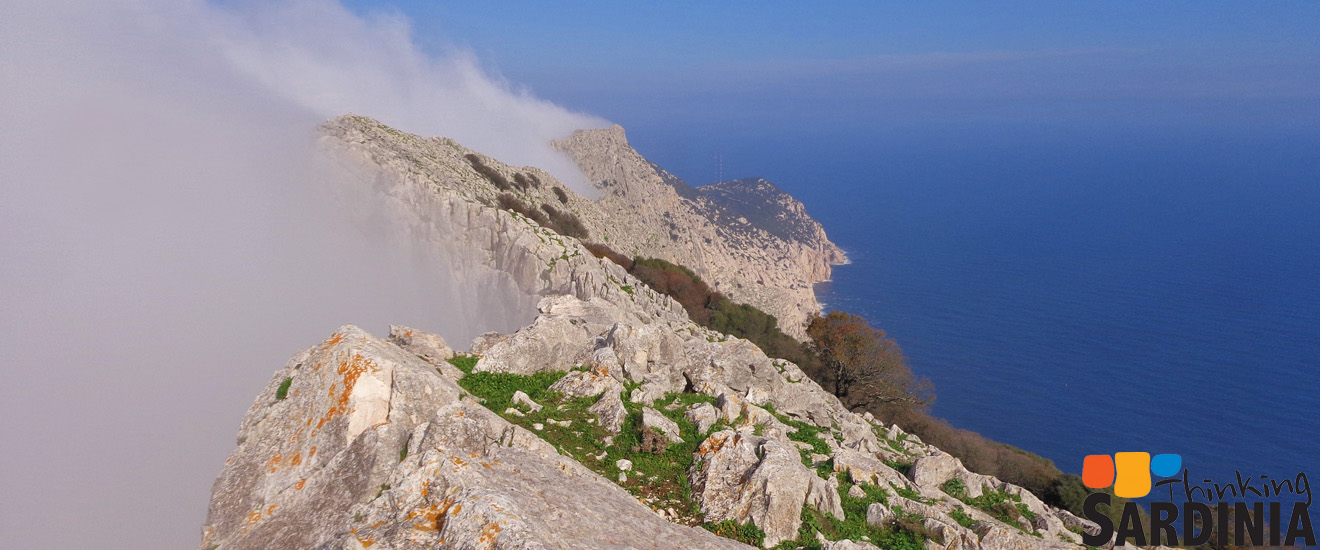|
The story of Tavolara
The origin of the name: often merchants that sailed in the ancient Mediterranean started to call islands, capes and mountains with a particular form using names of objects, animals or adjectives that most resembled to their. They had the clear intent to get recognizable the lands even from other sailors that for the first time crossed the sea. According to an ancient portolan made by Pisans, Tavolara Island had this name for the large table of limestone (Tabula->Tabulara) that characterized its summit; but the old name was not this. The geographer Ptolemy in his ‘geography’ tells of an island called 'Hermaea Insula', the island of Hermes. The old Mercury was the massager the gods but also the god of merchants and sailors that (maybe) before entering into the dangerous port of Olbìa could have a stop in Tavolara. We must certainly imagine a ‘Spalmatore di Terra’ (beach that dominates the west of the island) different from now, higher and verdant ideal to protect the boats from the winds of the Mistral and Tramontane. The large forest on island, the abundance of game and water might be really attractive for sailors for repairs and supplies.
Geological origins: long and interesting are the geological events that created our island, we’ll start the analysis faraway… in the Quaternary Period Sardinia was permanently separated from Corsica and the result of this detached are the multitude of islands that also today characterize the space between the Sardinia and Corsica. This is also the story of the creation Tavolara. The granite base on which is based the island is visible in certain parts like the beach of Spalmatore di Terra and all the north coast of the island, on the granite stand the huge rocky block composed by Dolostone and Limestone, this part of the island is dated at the Mesozoic Period. The top of the 'table' that characterizes the island is made in white limestone, it’s recognizable because is not covered by vegetation instead Dolostone is greatly covered.
Caves and Tafoni: Karst nature of a good part of the island has allowed the formation of natural cavities which are concentrated in the south east side of the island, created by the erosive action of the sea and atmospheric agents; an example are the ‘Cave of the Pope’ and 'The Guillotine'. Above the level of the sea we find ‘Grotta della Mandria’ located at the extreme tip south west of the island near the homonymous cape ‘La Mandria’.
Cave of the Pope and Cave La Mandria: Recent studies have shown that the presence of the hominids of genus ‘Homo’ in Sardinia would be dated to the middle Pleistocene (500,000 years ago). In the main island these hominids were mostly concentrated in the area of the Anglona. The Cave of the La Mandria in Tavolara instead shows evidence of the arrival of the man in Sardinia from the Italic peninsula. Around 22,000 (Wurm glaciation) B.C., taking advantage of sea level much lower, some human groups began to occupy Corsica descending then in Sardinia (first testimonies are in the Asinara Island in 6,000 B.C.) occupying also Tavolara. We must not be surprised that the prehistoric man selected the best position to guarantee food (stretches of sea bass and sandy soils), timber (forests) and especially the natural shelters (caves). In the cave La Mandria we have found scrap of meals, coal and animal bones dated 5,000 B.C.. Cave of the Pope returns instead fictile material of the nuragic period (age of bronze and copper), flints and a fibula made in copper (Mycenaean or Etruscan) and fictile material from Roman. The extraordinary are the cave paintings ascribed to the culture of Bonu Ighinu (4,000 - 3,400 a.C.).
A Marine Sanctuary: The 'Hermaea Insula' in the arc of its ancient history tells about a continuous human presence during the Prehistoric Age till to the Ancient Age. Its caves were only a shelter for man or perhaps something more? The presence of archaeological finds which extend up to the roman age could presage that Tavolara (consecrated to Mercury the God of merchants and mariners), and in particular the Cave of the Pope, was a sort of marine sanctuary; here all the sailors of the ancient Mediterranean offered votive gifts to the God Hermes (Mercury) to propitiate a good navigation.
Info: Mail : This email address is being protected from spambots. You need JavaScript enabled to view it. Mob: +39.333.68.98.146
Follow us: |











